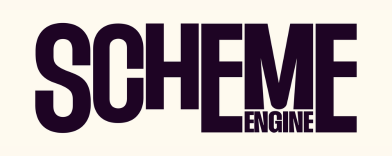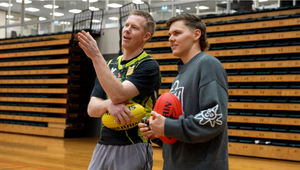
Behind WPP’s AI-Powered Campaign with a Human Soul

AI-driven creative often gets a rap for feeling… hollow. Clever gimmickry lacking human pizzazz. WPP’s latest global campaign, ‘Transforming How We Create’, sees the holding company promoting its own creative offering and sets out to prove the opposite.
Aimed at business leaders and senior marketers, the cross-channel B2B campaign showcases how artificial intelligence can amplify human creativity, rather than replace it.
Led by Rob Reilly, WPP’s global chief creative officer, the initiative is a first for the holding company itself. It was developed internally within WPP Open – WPP’s AI-powered marketing platform – by a team spanning multiple WPP agencies.
The campaign rolled out across targeted digital and social placements, alongside print, business press and digital out of home, featuring everything from traditional ads to “AI in the Life” demo videos. It comes at a time when WPP Media has launched as a fully integrated, AI-powered media company, uniting media, data, and production capabilities to deliver creative personalisation at scale for advertisers.
“‘Transforming How We Create’ demonstrates just how excited we are about the potential of AI, which is opening the door to the next stage of human creativity and enabling brands to connect with audiences in ways we never thought possible before,” says Rob, speaking exclusively with LBB.
It all began at the very top of WPP. Outgoing CEO Mark Read suggested that WPP should undertake a campaign about creativity itself – essentially acting as an ad for the company’s own creative capabilities. At first, Rob admits hesitation. “There are a million angles on creativity,” he tells me. But the turning point came when WPP developed its own suite of AI products and tools. “I reaslied we had something genuinely exciting to showcase – not just the work we do for clients but something tangible about us.”

So, once WPP Open was up and running, the narrative clicked. “When the product is great, creating the campaign is easy. Once we had something substantial beyond our client work, the campaign naturally took shape,” says Rob.
Being your own client is an interesting process according to Rob. Being “client and creative” meant WPP could move fast, and experiment freely, but it also required unprecedented collaboration. The cross-agency team included an amalgamation of creative, branding, PR and production arms like Ogilvy, Landor, BCW, Hogarth, and design studio, ManvsMachine.
“We’re all part of WPP, but before Open, collaboration wasn’t always easy. Now we’ve got a shared space that learns as we use it. It understands our ways of working, our advertising history, the brands we’ve worked on.” It’s telling that nearly 48,000 WPP employees now use WPP Open every month.

The campaign team also leveraged generative AI tools through Open – large language models like OpenAI’s ChatGPT and Anthropic’s Claude helped rapidly draft and refine briefs, concepts were run by AI-powered “synthetic audiences” to gauge reactions, and Google’s image and video models (such as Veo, Imagen and Gemini) were tapped during production.
Rob knew that to authentically promote WPP Open, he had to use it intently. “I’m one of the top users – maybe even the top user… You’ve got to live it to write about it,” he says.
It was around a year ago that he dove in for a proper hands-on trial of the system, and almost overnight “was addicted to it". Rob describes it as a sounding board he can bounce ideas off. “Personally, I use it as my partner.”
One of the campaign’s more playful moments came courtesy of an unlikely muse: a moose. Rob recalls the team piecing together a short social video and knowing that “it just needed a bit of fun”. While tossing around rhyming lines, a producer jokingly blurted out ‘moose". The editor quickly used an AI image generator via WPP Open to conjure a moose character into the scene.

Amoosed, the team ran with it. “We added the line ‘let loose’ and thought, what if the moose was drinking whisky in a lounge? So we kept going,” Rob says laughing. In the end, the surreal, suave moose would become many viewer’s favourite part.
Jokes aside, the moose illustrates a much bigger point: how AI is capable of empowering the creative process. In the past, indulging in the wild idea might have been unthinkable. “Five years ago this would be impossible. The idea-to-execution gap was passive. You’d have to pitch it to a head of production and figure out how on earth to make it happen,” says Rob.
In this case, AI helped the creatives be more spontaneous and bold – injecting a bit of humour and humanity that no algorithm alone would have conceived. And isn’t that the whole point?
'Transforming How We Create' was personal for Rob. After years as a creative executive, he found himself rolling up his sleeves and writing copy again – rediscovering the joy of the work. “I’m a copywriter originally, and in the jobs, it’s easy to go from maker to manager quickly,” he tells me. But this project pulled him back to the making. “Sitting down to write a long-form piece, a print ad – doing the writing – really brought me back to why I love this business.”
Ironically, it was AI that helped him get back into the groove. By using it as an ever-available brainstorming partner and diligent copy editor, he felt freed up to focus on big ideas, personal voice, and improvement of the copy. This is the philosophy at the heart of 'Transforming How We Create'. If AI can automate the grind, creatives can aim higher – and it’s a message meant as much for WPP’s own talent as for its clients.
It took several iterations and plenty of introspection to nail the balance the campaign was trying to achieve. Rob credits a collaborative strategist, David Webster of Ogilvy, with helping crack the code. They went through many taglines and concepts until one day, the simplest and clearest emerged.
“When we got to ‘Transforming How We Create’ – that was the moment.” That’s when the campaign truly found its heart, says Rob. “We wanted to be clear that we’re fully committed to AI, because we are. But we also wanted to emphasise that our people are essential to that process.”
Rob is the first to say this slogan isn’t a classic consumer-facing tagline like 'Just Do It' – it’s more of a mission statement. “It’s an important piece of language for this moment. Language anchored in capturing that tipping point in time where tech and creative converge, leaving no one behind."















